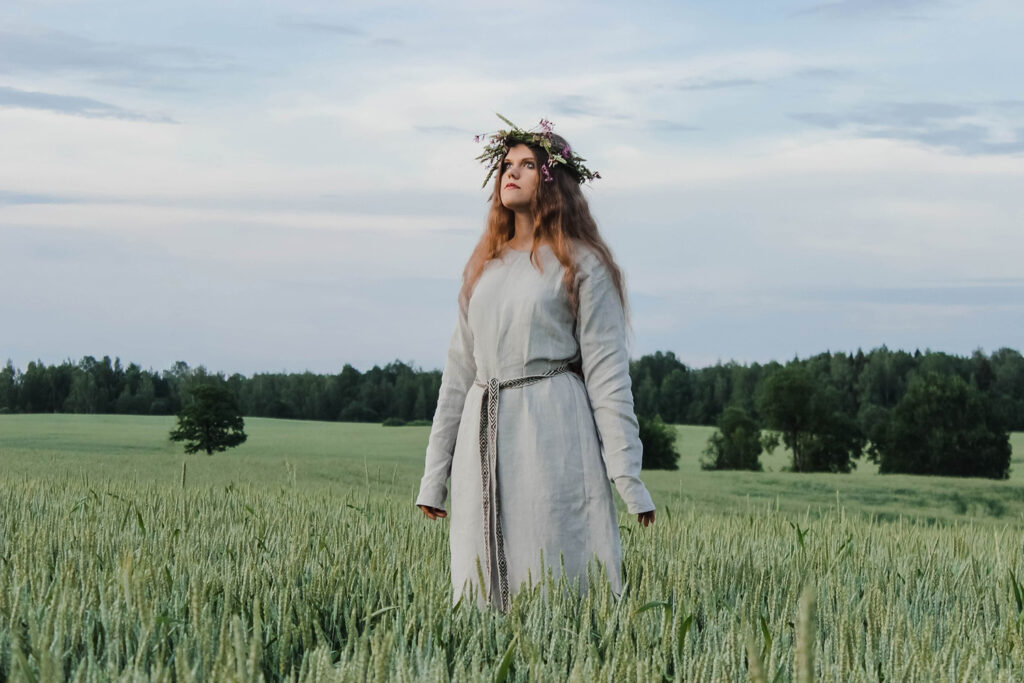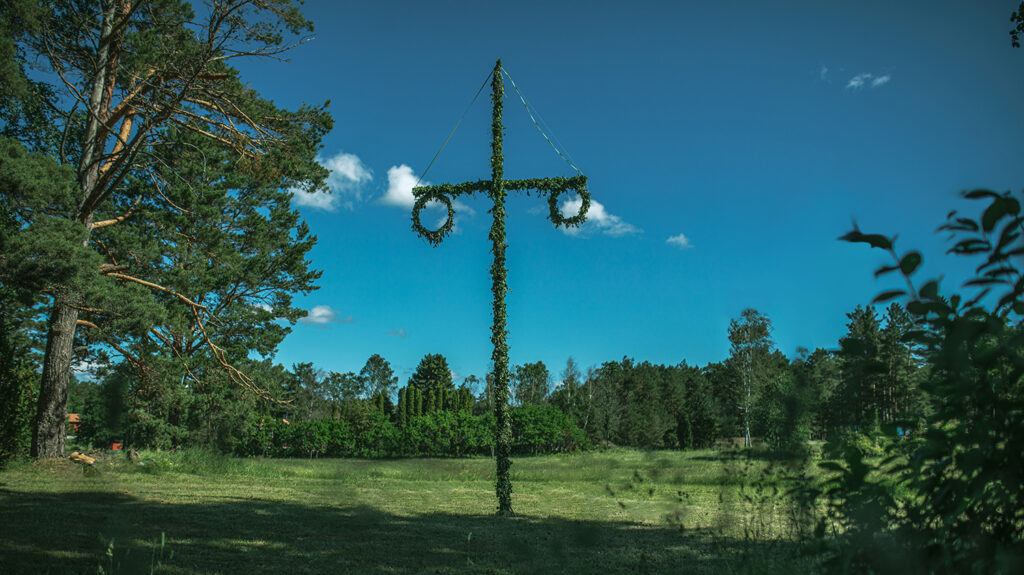When is Midsummer celebrated?
Midsummer is one of the most beloved and traditional holidays in Sweden. It is celebrated each year around June 21st, marking the summer solstice when the day is longest and the night shortest. Midsummer’s Eve is considered one of the most important holidays and is filled with joy, festivities, and symbolism.
It is difficult to determine exactly when Midsummer celebrations began in Sweden, as they have their origins in ancient pagan traditions, where the summer solstice was celebrated, honouring the sun and the fertility of nature. These pagan rituals and festivities were common throughout Europe, including among the ethnic groups residing on the Scandinavian peninsula.

During the Middle Ages, Christianity was introduced in Sweden, and Midsummer celebrations became associated with the birth of St. John the Baptist, celebrated on St. John’s Day, June 24th.
In 1953, it was decided that Midsummer Day would always be celebrated on a Saturday to better fit into the workweek. Midsummer Day now falls between June 20th and 26th, and Midsummer’s Eve between June 19th and 25th.
Midsummer Celebrations through the ages
During the 19th century, it became even more popular to celebrate Midsummer, as it also became associated with Swedish nationalism and there was a prevailing interest in folk culture and tradition. Writers and artists such as August Strindberg and Carl Larsson contributed to popularising and spreading the image of traditional Swedish Midsummer celebrations.
From the late 19th century, there are records describing how Midsummer celebrations took place in the rural environment of that time. To begin with, the house had to be cleaned, all textiles aired out, and the courtyard tidy. Flowers and leaves from birch or other trees were used for decoration both indoors and outdoors. Floors could also be strewn with leaves that were beautiful to look at and smelled good, and leafy branches were placed outside the door. In cities, leaf markets were held just before Midsummer, where farmers from the countryside sold leafy branches to city dwellers.

Midsummer in Swedish folklore
In rural society, Midsummer celebrations were associated with love and eroticism. The magical night belonged primarily to the youth, and they were supposed to dance until the sun came up. The church and clergy occasionally directed harsh criticism at the festivities because they were considered to promote immoral behaviour. This sometimes forced changes in the traditions, but they were never completely eradicated.
The dance venues varied. If one did not have a Midsummer pole, or wanted to avoid the celebration where there was one, the dance could be held elsewhere, like a spot that was flat enough for dancing, such as by a spring, in a barn, or at a crossroads.
In rural society’s folk beliefs, Midsummer night was one of the most magical nights of the year, when nature was abundant with power. It was believed that the boundary between the human world and the realm of the supernatural was thinner than usual, and there are many stories of amazing things that could happen on this night. For example, it was said that medicinal plants were especially powerful on Midsummer night. Fortune-telling and omens were also common in rural society. The major holidays of the year were considered particularly suitable for predicting the future.
Since Midsummer was the holiday of love, it was the right time to find out who you would marry.
A form of this Midsummer magic still exists today, namely picking flowers to put under one’s pillow to dream of the person you will marry.
According to tradition, the flowers should be picked in silence. The number of flowers varies, but the most common practice is to pick seven or nine different kinds of flowers. Sometimes tradition also dictates that one should climb over as many fences as they pick flowers. This can be seen as a symbolic crossing of boundaries between the ordinary world and the supernatural.

Midsummer dew was also sought after, and if one walked barefoot in it, they would remain strong and healthy throughout the year. Dew was also collected to cure illnesses and to ensure that bread and beer would ferment properly throughout the year.
Midsummer was also a suitable time for treasure hunters. It was said that enchanted treasures would rise from the ground and become visible to people. If the treasure hunter managed to remain silent, he could obtain them; however, if he broke the silence, the treasures would disappear forever.
The Midsummer pole
The Midsummer pole probably came to Sweden from Germany during the Middle Ages and is documented in illustrations from the 17th century. It is sometimes called a Maypole because in Germany and on the continent, it is raised in connection with May Day celebrations, but due to Sweden’s cooler climate and the fact that leaves often haven’t yet appeared in early May, the tradition was moved to Midsummer.
In many places in rural society, people raised the Midsummer pole together and amused themselves with dances and games around it. Its appearance varied; there were many variations in shape, size, decoration, and how the wreaths should be hung. Leaves were among the most common decorations, but also paper ribbons and coloured eggshells were used.

Raising the Midsummer pole is still a ceremonial act performed jointly by participants in the Midsummer Eve celebration. Midsummer poles are raised in public places like parks, community centres or local heritage centres, but also in private gardens. The pole is usually made of wood and can be several metres high, adorned with greenery, flowers, and colourful ribbons.
Singing- and dancing-games and long dances around the Midsummer pole were (and still are) common. However, the singing game that has almost become a national symbol for Swedish Midsummer celebrations – “Små grodorna” wasn’t played until the early 20th century. It is not mentioned in records of folk games from the 19th century and was probably created at the castle Nääs near Gothenburg. At Nääs they taught both handicrafts and games to preserve rural culture, but also created new games intended for educational purposes. “Små grodorna” belongs to the latter category and was first published in 1922.
The Midsummer food
The food served at Midsummer should be extra festive, but what one ate in the old days varied depending on where in the country they lived and the availability of different foods.
Today, no Midsummer in Sweden is complete without gravlax (cured salmon) and herring. These two dishes are staples on the Swedish Midsummer table. Gravlax is raw salmon marinated in a mixture of salt, sugar, and dill. There is a wide selection of herring in various picklings such as onion herring, mustard herring, and garlic herring. These are typically served with boiled new potatoes, preferably with butter or sour cream and dill or chives.
Snaps, a spiced liquor, is often served with the meal and is typically enjoyed after a little song – a so-called “snapsvisa”. Snapsvisor are drinking songs that originate from the 19th century, with roots in an older tradition and are a typical Swedish phenomenon. It is only in Sweden and Swedish-speaking Finland that people continue to create and sing drinking songs, usually based on a well-known melody but with new words.
The Midsummer meal is then typically rounded off with strawberries and lightly whipped cream or perhaps a strawberry cake.
